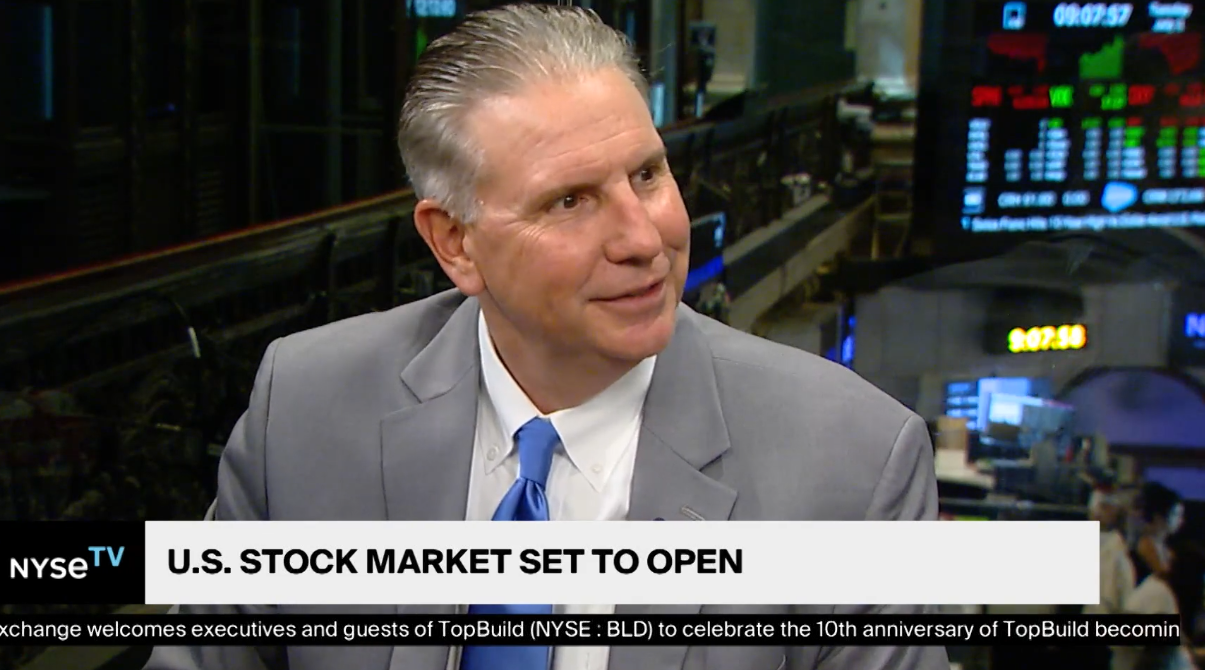
Last Week’s Markets in Review: Assessing Recent Market Moving Events

Global equity markets finished higher for the week. In the U.S., the S&P 500 Index closed the week at a level of 4,158, representing a gain of 6.62%, while the Russell Midcap Index moved 5.64% higher last week. Meanwhile, the Russell 2000 Index, a measure of the Nation’s smallest publicly traded firms, returned 6.49% over the week. Developed international equity and emerging markets performance was higher, returning 3.51% and 0.92%, respectively. Finally, the 10-year U.S. Treasury yield moved lower, closing the week at 2.74%.
We hope that everyone enjoyed the extended holiday weekend in celebration of Memorial Day. Thank you to all who have served, and continue to serve, our great country. To kick off this week, we will take a deep dive into what drove markets during last week’s eventful slate of market-moving events.
Tuesday 5/24:
PMI Composite Flash – The composite index came in lower than expected as the actual reading of 52.8 was below consensus expectations of 55.5. The index, a measure of private sector output, showed slight signs of slowing during May, indicating a slowing economy.
New Home Sales – New single-family home sales data for the month of April came in well below expectations at a seasonally adjusted rate of 591,000 vs. expectations of 750,000. The drop in sales may be attributed to increasing mortgage rates.
Wednesday 5/25:
Durable Goods Order – Orders rose by 0.4% on a month-over-month basis, slightly below the consensus of 0.5%. Although below expectations, the positive figure provided markets with some confidence concerning the inflation outlook, as increased business spending for durable goods is an attempt to fill orders.
FOMC Minutes – Early week volatility was highly attributable to this release’s anticipation. The minutes from the most recent Federal Open Market Committee (FOMC) meeting indicated few surprises, which markets enjoyed, as officials within the Fed discussed the possibility of raising interest rates high enough to combat inflation, even if it means deliberately slowing the economy. The minutes suggest that the Fed may put a “pause” on rate hikes after the two 50 bps hikes this summer.
Thursday 5/26:
Retail Earnings – Retailers reporting earnings early Thursday morning offered positive reverberation across markets. Strong results from companies including Macy’s, Dollar General, and Dollar Tree all beat analysts’ expectations and provided positive guidance in what has been a bleak earnings season for retailers.
GDP – Revisions to first-quarter gross domestic product (GDP) were negative on paper but positive for markets. In the first quarter, GDP was revised down to -1.5% vs. the previous -1.4% and consensus -1.3%. Importantly, the release indicated a rise in gross domestic income of 2.1% annualized, which would support suggestions that the GDP decline is due more to the timing of imports and not a true weakness in the economy.
Jobless Claims – Claims for last week came in at 210,000 below the prior week, which totaled 210,000.
Friday 5/27:
Personal Income and Outlays – The most important aspect of the release is related to personal consumption expenditures (PCE). PCE is the primary gauge of inflation by the Federal Reserve. The release aligned with consensus expectations at 4.9% year over year. More importantly, the 4.9% figure represents two consecutive months of declining inflationary readings.
Consumer Sentiment – To top off the week’s economic data drops, consumer sentiment was lower than the expected 59.1 consensus at 58.4. As consumer sentiment is closely tied to consumer spending, the lower reading had a negative impact on the markets, given that consumer spending accounts for approximately 70% of GDP.
Last week’s data-packed events resulted in the first positive week for U.S. equity markets in eight weeks. Each week, various economic events may impact how markets move. As a result, we believe it is important to understand how different data may affect various asset classes. To recognize how such events will impact your specific portfolio, we suggest working with professional asset managers to assess whether or not any of the new information warrants portfolio adjustments based on each investor’s risk, time horizon, and investment objectives.
Best wishes for the week ahead!
Economic data is not final and is subject to revisions. PMI Composite data sourced from S&P Global as of 5/24/22. New Home Sales data sourced from the US Department of Housing and Urban Development on 5/24/22. Durable Goods Orders, GDP, and Personal Income and Outlays data sourced from US Department of Commerce on 5/25/22, 5/26/22 and 527/22. Jobless Claims sourced from the US Department of Labor on 5/27/22. Consumer Sentiment data sourced from the ISR of University of Michigan on 5/27/22. Equity Market and Fixed Income returns are from JP Morgan as of 5/27/22. Rates and Economic Calendar Data from Bloomberg as of 5/27/22. International developed markets are measured by the MSCI EAFE Index, emerging markets are measured by the MSCI EM Index, and U.S. Large Caps are defined by the S&P 500 Index. Sector performance is measured using the GICS methodology.
Disclosures: Past performance does not guarantee future results. We have taken this information from sources that we believe to be reliable and accurate. Hennion and Walsh cannot guarantee the accuracy of said information and cannot be held liable. You cannot invest directly in an index. Diversification can help mitigate the risk and volatility in your portfolio but does not ensure a profit or guarantee against a loss.
Diversification can help mitigate the risk and volatility in your portfolio but does not ensure a profit or guarantee against loss.
Investing in commodities is not suitable for all investors. Exposure to the commodities markets may subject an investment to greater share price volatility than an investment in traditional equity or debt securities. Investments in commodities may be affected by changes in overall market movements, commodity index volatility, changes in interest rates or factors affecting a particular industry or commodity.
Products that invest in commodities may employ more complex strategies which may expose investors to additional risks.
Investing in fixed income securities involves certain risks such as market risk if sold prior to maturity and credit risk, especially if investing in high yield bonds, which have lower ratings and are subject to greater volatility. All fixed income investments may be worth less than the original cost upon redemption or maturity. Bond Prices fluctuate inversely to changes in interest rates. Therefore, a general rise in interest rates can result in the decline of the value of your investment.
Definitions
MSCI- EAFE: The Morgan Stanley Capital International Europe, Australasia and Far East Index, a free float-adjusted market capitalization index that is designed to measure developed-market equity performance, excluding the United States and Canada.
MSCI-Emerging Markets: The Morgan Stanley Capital International Emerging Market Index, is a free float-adjusted market capitalization index that is designed to measure the performance of global emerging markets of about 25 emerging economies.
Russell 3000: The Russell 3000 measures the performance of the 3000 largest US companies based on total market capitalization and represents about 98% of the investible US Equity market.
ML BOFA US Corp Mstr [Merill Lynch US Corporate Master]: The Merrill Lynch Corporate Master Market Index is a statistical composite tracking the performance of the entire US corporate bond market over time.
ML Muni Master [Merill Lynch US Corporate Master]: The Merrill Lynch Municipal Bond Master Index is a broad measure of the municipal fixed income market.
Investors cannot directly purchase any index.
LIBOR, London Interbank Offered Rate, is the rate of interest at which banks offer to lend money to one another in the wholesale money markets in London.
The Dow Jones Industrial Average is an unweighted index of 30 “blue-chip” industrial U.S. stocks.
The S&P Midcap 400 Index is a capitalization-weighted index measuring the performance of the mid-range sector of the U.S. stock market and represents approximately 7% of the total market value of U.S. equities. Companies in the Index fall between S&P 500 Index and the S&P SmallCap 600 Index in size: between $1-4 billion.
DJ Equity REIT Index represents all publicly traded real estate investment trusts in the Dow Jones U.S. stock universe classified as Equity REITs according to the S&P Dow Jones Indices REIT Industry Classification Hierarchy. These companies are REITs that primarily own and operate income-producing real estate.



